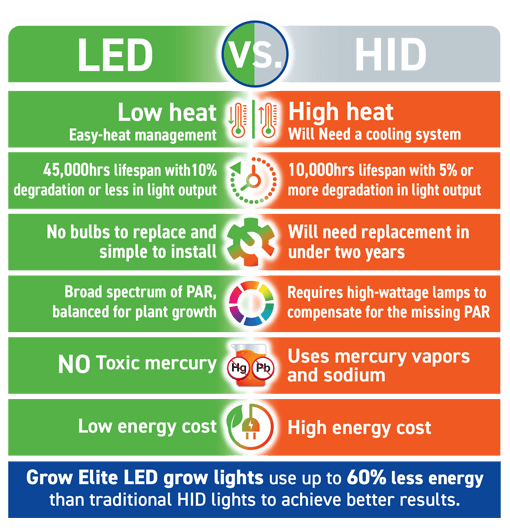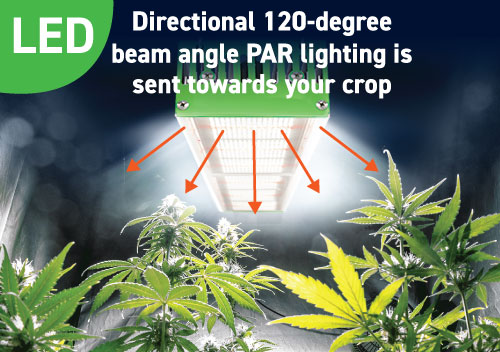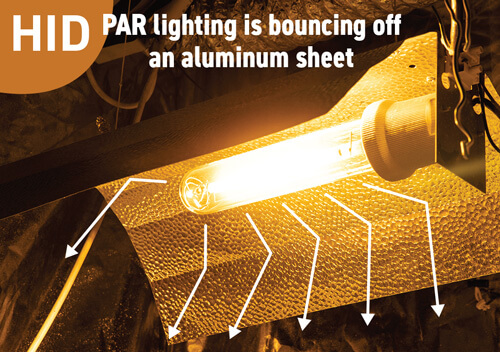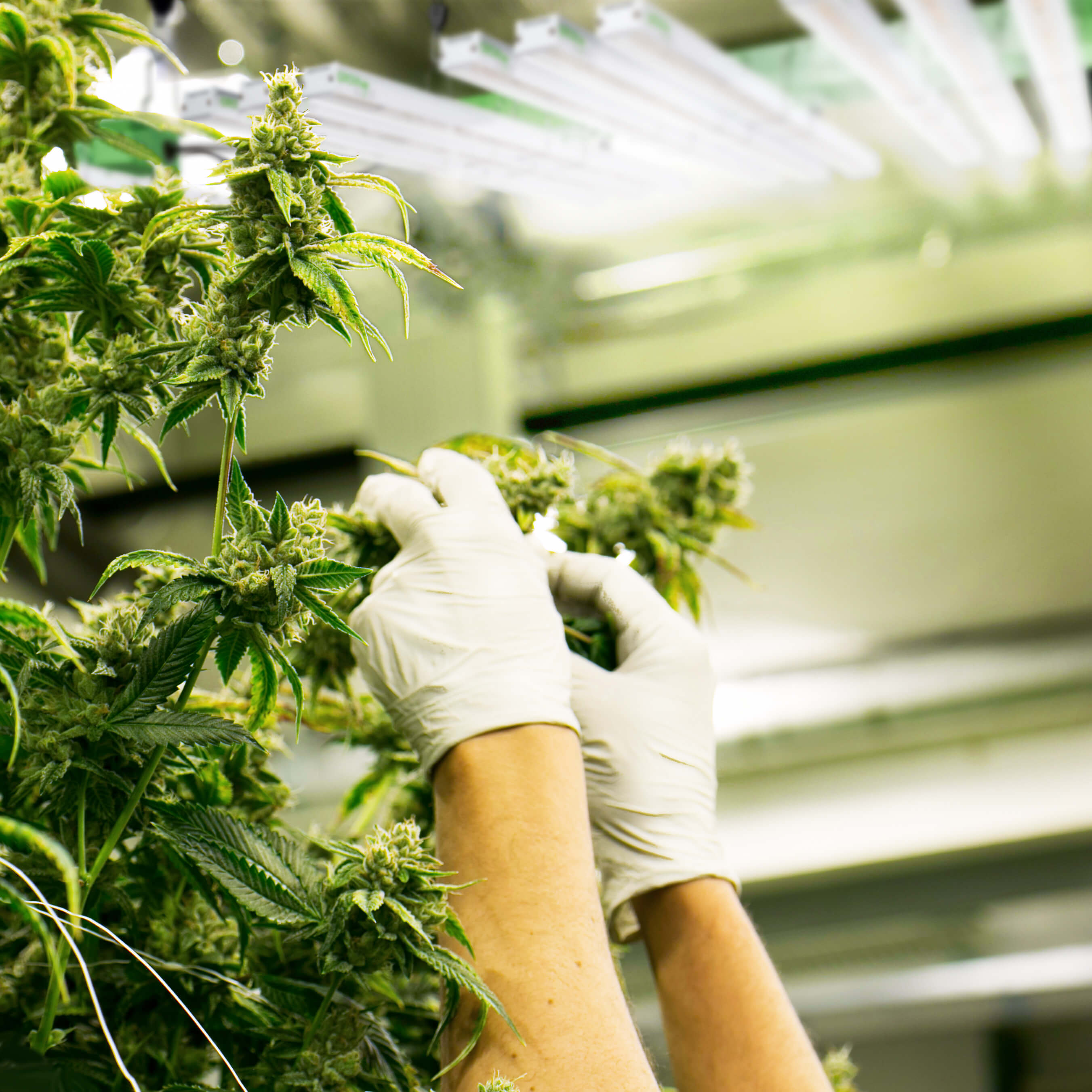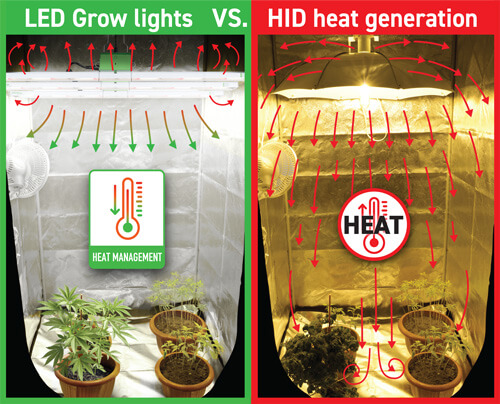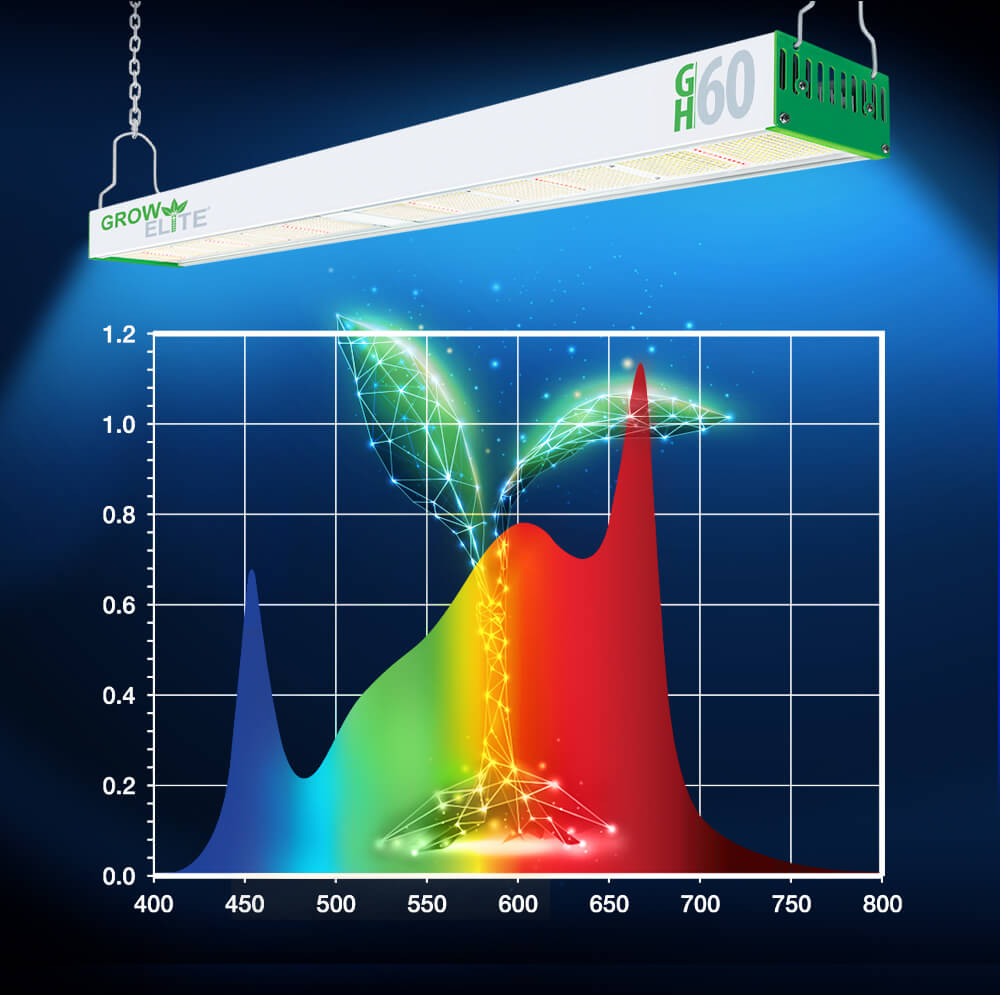HID vs. LED Grow Lights — 5 Reasons why LED is a Better Choice than HID Lights for Growers
1 - LED Grow Light Lifespan vs. HID
Grow Elite is a Samsung development partner, and our commercial grow lights use primarily Samsung LED chips. Our lights undergo L90 testing and will reach 45,000hrs with less than 10% degradation in light output. At twelve hours per day, that is more than four years of worry-free grow lighting.
2 - HID vs. LED grow light efficiency
The efficiency of the LED grow light you choose involves more than just the power it consumes. You can learn more in our white paper.
3 - HID vs. LED lights maintenance costs
The old-school HID grow lights are a lot of work. The reflectors need to be cleaned before each harvest. That's to ensure the transfer of non-directional light from the HID bulb towards the plants. The HID bulbs need to be removed carefully and cleaned too. The fragile HID bulb must have all the grow room residue and any oily fingerprints removed before reinstalling. Any residue on the HID lamp will degrade its lifespan.
Grow Elite commercial led grow lights use Samsung LED chips with a directional 120-degree beam output. The valuable PAR lighting is sent towards your crop instead of being lost bouncing off an aluminum sheet.
Getting ready for the next crop is as simple as wiping down the protective glass cover. No disassembly is required.
4 - LED Grow lights vs. HID heat generation
LED plant lighting makes it easier to manage your plant's climate and develops healthier plants. HID bulbs are incredibly inefficient. They waste an enormous amount of energy to create a little bit of light. You can feel the wasted energy with your hands. It is released as heat.
Worse, all that heat is directed downwards towards your crop. This harms the climate below the crop canopy. Overheated tops and cold roots stress plants, making them weak. As a result, they are more vulnerable to pests and diseases.
Grow Elite's LED commercial grow lights emit very little forward heat. Instead, the heat travels up and away from your plants. Avoiding microclimates and the related plant stresses.
5 - HID vs LED Grow lights plant growth and photosynthesis.
LED grow lights can be engineered with a photosynthesis-specific broad spectral output. Horticulturists and indoor gardeners spent the last few decades using primarily blue and red spectrum lighting on their crops. This was based on a widespread misunderstanding; the 400-500nm (Blue) and the 600-700nm (Red) wavelengths were solely responsible for photosynthesis in plants.
Cannabis cultivators adapted this research and developed a successful strategy. The Blue end of the spectrum is emphasized to increase leaf growth during a plant's vegetative phase, most commonly with high-intensity discharge (HID) metal-halide lamps. The flowering stage is the opposite, receiving more light from primarily red light sources like HID high-pressure sodium lamps, which helps increase height and flower development.
This strategy requires high-wattage lamps to compensate for the missing PAR in their light spectrum. It also involves an elaborate room and lamp swapping system to compensate for the plant's growth stage and photoperiod.
A properly designed LED grow light requires a broad spectrum of PAR which has been balanced for horticulture use. This leads to more plant photosynthesis and less wasted electricity. It also eliminates the need to swap grow lamp bulbs or stress the crop by moving them to different rooms and climates.

